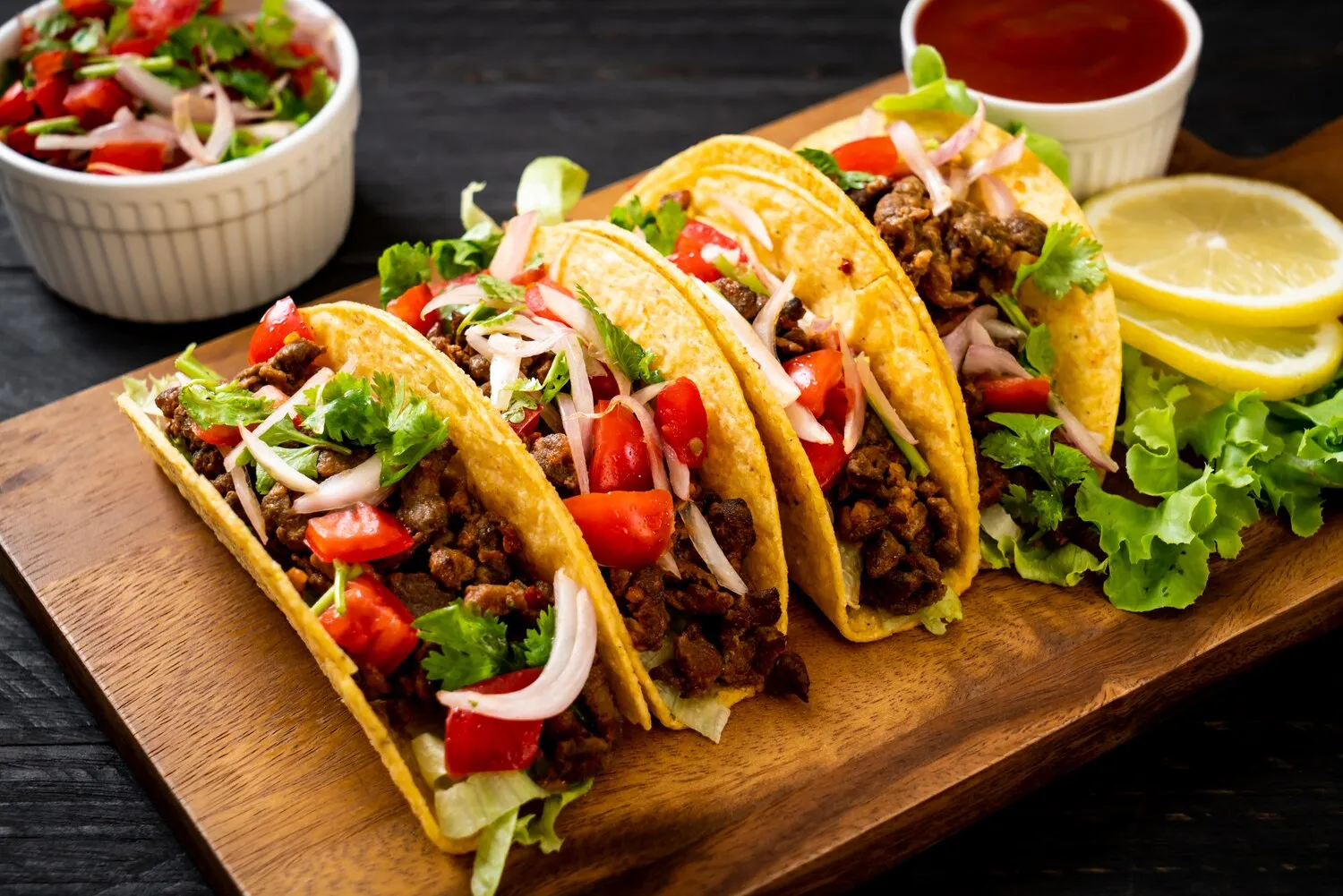
Tacos
Corn or flour tortillas filled with various meats, toppings like onions, cilantro, salsa, and cheese.
Nutrition Facts
* The % Daily Value (DV) tells you how much a nutrient in a serving of food contributes to a daily diet. 2,000 calories a day is used for general nutrition advice.
Mi Azteca Mexican Restaurant
Tacos have a long and rich history in Mexico, predating the arrival of Europeans. The word "taco" likely originated from the Nahuatl word "tlahco," referring to the halfway point. It originally described the paper used to wrap gunpowder for miners, but eventually came to describe various wrapped foods. The modern taco evolved from these earlier forms, incorporating influences from indigenous ingredients and cooking methods, as well as Spanish and other European culinary traditions.
Tacos are a cornerstone of Mexican cuisine and culture, representing much more than just a simple meal. They are a symbol of social gathering, celebration, and regional identity. From street food to fine dining, tacos are ubiquitous and enjoyed by people of all walks of life.
Street Food Staple
Tacos are primarily known as street food, sold by street vendors and in small taquerias throughout Mexico. These vendors often specialize in particular types of tacos, passed down through generations.
Regional Variations
Different regions of Mexico boast unique taco styles and fillings. For example, Baja California is famous for fish tacos, while Oaxaca is known for its tlayudas, a large, crispy tortilla topped with various ingredients, resembling a pizza-like taco.
Social Gathering
Taco nights are a popular way for families and friends to come together and share a meal. The communal aspect of preparing and enjoying tacos reinforces social bonds.
Dia del Taco
Dia del Taco (Taco Day) is celebrated on March 31st in Mexico, a day dedicated to enjoying and appreciating this iconic dish.
Tacos offer a vibrant combination of savory, spicy, and fresh flavors. The core flavors come from the seasoned meat, complemented by the freshness of onions, cilantro, and the tang of lime. Salsa adds heat and depth, while cheese provides richness and creaminess.
The dominant flavor depends heavily on the meat filling. Options range from marinated and grilled meats like carne asada (grilled steak) and al pastor (marinated pork cooked on a vertical spit) to slow-cooked and shredded meats like carnitas (braised pork) and barbacoa (slow-cooked sheep or goat). The choice of salsa, from mild tomato-based salsas to fiery chili-based ones, drastically alters the spice level. Onions and cilantro provide a sharp, herbal counterpoint, while lime juice adds brightness and acidity. The tortilla itself contributes a subtle corn or flour flavor, adding another layer of texture and taste.
Tortilla Choice Matters
Corn tortillas are traditional and offer a distinct flavor, but they can be prone to cracking. Warming them on a comal or skillet makes them more pliable. Flour tortillas are more flexible and have a softer texture.
Meat Preparation is Key
Marinating your meat before cooking enhances flavor and tenderness. Ensure the meat is cooked to the appropriate temperature for food safety and optimal taste. Don't overcrowd the pan when cooking; cook in batches for better browning.
Salsa Selection
Choose a salsa that complements the meat and your spice preference. Consider making your own salsa for a truly authentic flavor. Fresh ingredients will always elevate the taste.
Simplicity is Best
Don't overload the taco with too many toppings. A few well-chosen ingredients are often better than a multitude of flavors. Focus on balance and complementary tastes.
Warm the Tortilla
Warming the tortilla on a dry skillet before assembling the taco ensures the tortilla is pliable and doesn't break when folded.
Explore additional Mexican dishes and restaurants
Explore MexicanDiscover top dining spots and culinary experiences in Chantilly.
Explore ChantillyLearn more about the food culture, restaurant scene, and culinary heritage of United States.
Explore United States